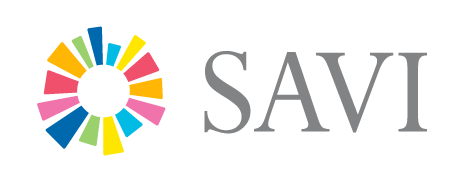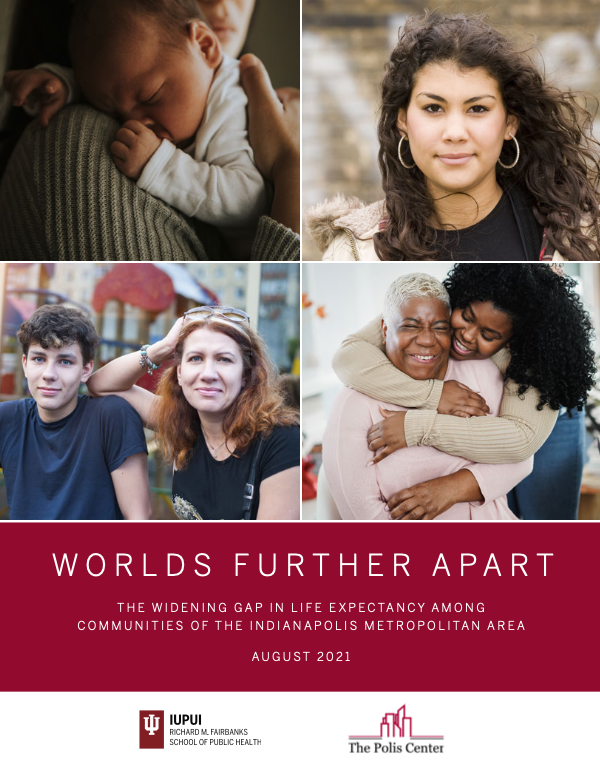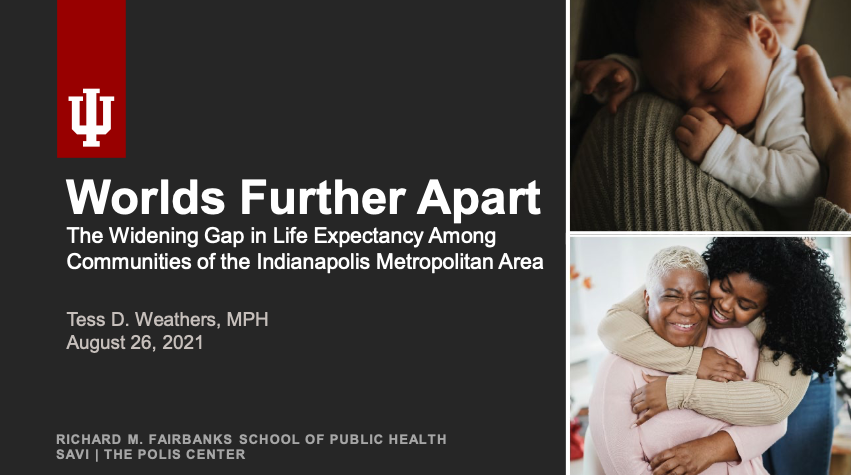Worlds Apart
An Update on Gaps in Life Expectancy in Central IndianaSAVI Talks – August 26, 2021
In 2015, the IU Fairbanks School of Public Health (FSPH) and The Polis Center published an issue brief, Worlds Apart: Gaps in Life Expectancy in the Indianapolis Metro Area, that brought to light a 14+ year gap in life expectancy between the longest and shortest living communities in Central Indiana. Because of the significant interest and community discussion that the report generated, we have collaborated to update our analysis. We will see which communities gained or lost life expectancy over a 10-year span (prior to COVID-19), and we’ll compare life expectancy at different ages across the life course to see how patterns differ.
In this August 26 SAVI Talks event, we will also share key findings from our deep dive with SAVI data examining underlying social factors and life expectancy in Central Indiana communities. Join us to be informed and help spur community action–because everyone deserves the opportunity for a long and healthy life.
Other partners include The Polis Center, SAVI, WFYI, and the Central Indiana Senior Fund, a fund of the Central Indiana Community Foundation, Inc
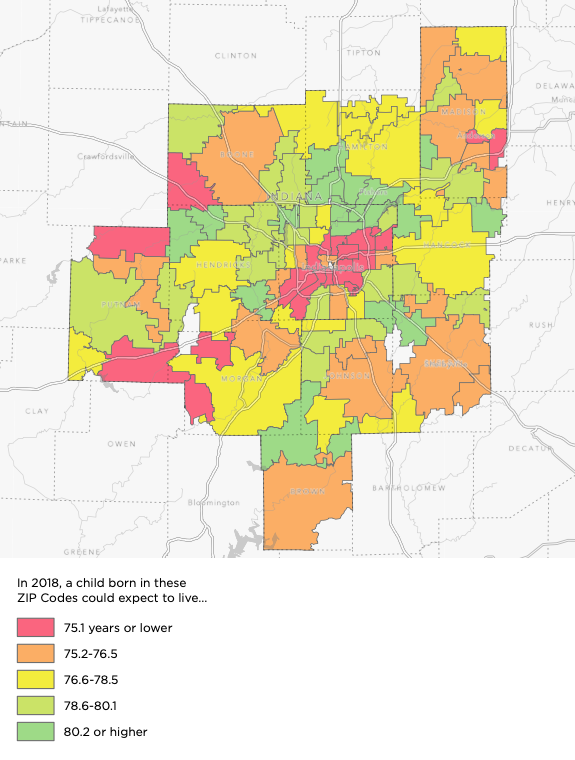
Articles and Story Maps
Explore other research and interactive content we have developed around equity.
Greenspace Assessment for Marion County
Greenspace is an important component of urban centers and can have many beneficial effects for both humans and the environment. However, greenspace is not equal across an entire urban center, nor can it be developed in the same ways throughout a city. Based on a...
Academic Standardized Test Scores for the Hearing Aid Assistance Program of Indiana (HAAPI) Participants and Applicants
This research was funded and produced in partnership with Hear Indiana, whose mission is to create equal opportunities for children with hearing loss through Listening & Spoken Language services.Summary Hear Indiana is partnering with the Polis Center to...
Equity in Criminal Prosecutions: Analyzing Case Filings from the Marion County Prosecutor’s Office
The Kheprw Institute and The Polis Center are partnering to better understand the criminal justice system in Marion County and investigate potential disparities. Previous research from the Polis Center estimated that Black residents of Marion County were 2.7 times...
Support and Training
OUR EMPHASIS: Analysis We turn data into actionable information and share those results in accessible formats.Interactive Data Tools We build web platforms where the public can freely access data and knowledge.Data Integration We integrate data from a multitude of...
2022 Midterm Election Voter Turnout in Marion County
Key points Voter turnout in Marion County is low relative to Indiana and the U.S. Within Marion County, there is great variation in voter turnout between precincts Lower voter turnout in Marion County tends to occur in areas that are less affluent, have lower...
Transportation Equity and the Older Adult Population
Access to transportation is important because it empowers older adults to maintain their independence. Transportation opportunities for older adults may take different forms, including driving, public transportation, ride-share service, or shuttle buses. This report...
Domestic Violence in Marion County Criminal Justice System – 2022
This is an update to our 2018 report. By combining data from different elements of the criminal justice system, we reveal basic statistics about domestic violence in Marion County. Some key findings include: In 2020, there were an estimated 10,105 victims of domestic...
The Good Jobs Gap
There are one million jobs in Central Indiana, but only 43 percent are “good jobs” that pay at least $40,000 per year and provide health insurance. Understand who has good jobs and what is being done to create more.
Data & Drafts Follow the Money: Indianapolis Evictions in 2022
Eviction filings are on the rise compared to last year, but still lower than before the pandemic. Most evictions are from large owners of big apartment complexes.
Data & Drafts: A Decade of Decline: College-Going Rates in Central Indiana
An analysis of Central Indiana high schools shows that declines in college-going rates impact everyone, from affluent suburban communities to economically disadvantaged neighborhoods.
Authors
Tess Weathers
IU Richard M. Fairbanks School of Public Health
Karen Comer
The Polis Center
Jay Colbert
The Polis Center
Matt Nowlin
The Polis Center
Jeramy Townsley
The Polis Center
Event Partners
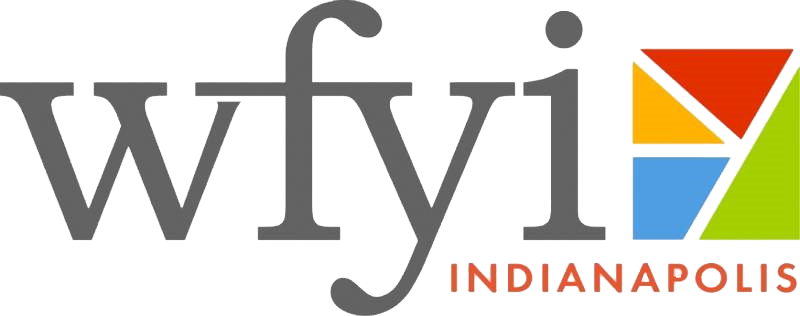
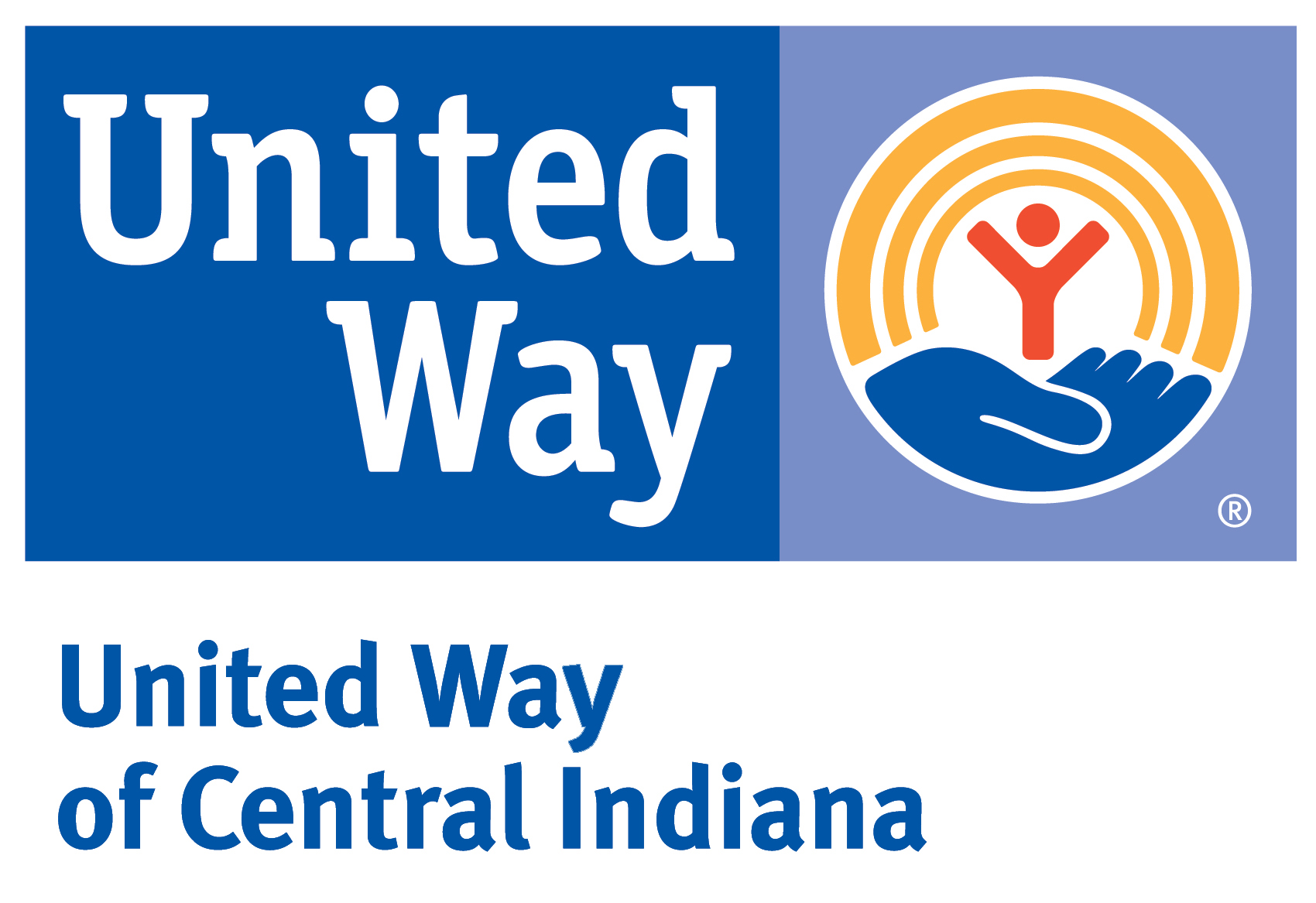



SAVI Talks Presenters
Tess Weathers
IU Richard M. Fairbanks School of Public Health
Matt Nowlin
Data Analyst
Polis Center
SAVI Talks Panelists
Ashley Gurvitz
Exec. Director & CEO
Alliance for Northeast Unification
Sabae Martin
Butler Tarkington Neighborhood ASsaoc. Board Member
Ron Rice
DIP-IN Commnity Health Worker
Flanner House
LaShauna Triplett
School Director
Mackide Lovveal & Trip Outreach Center
Moderator
Farah Yousry
Health Equity Repoirter
WFYI Public Media
